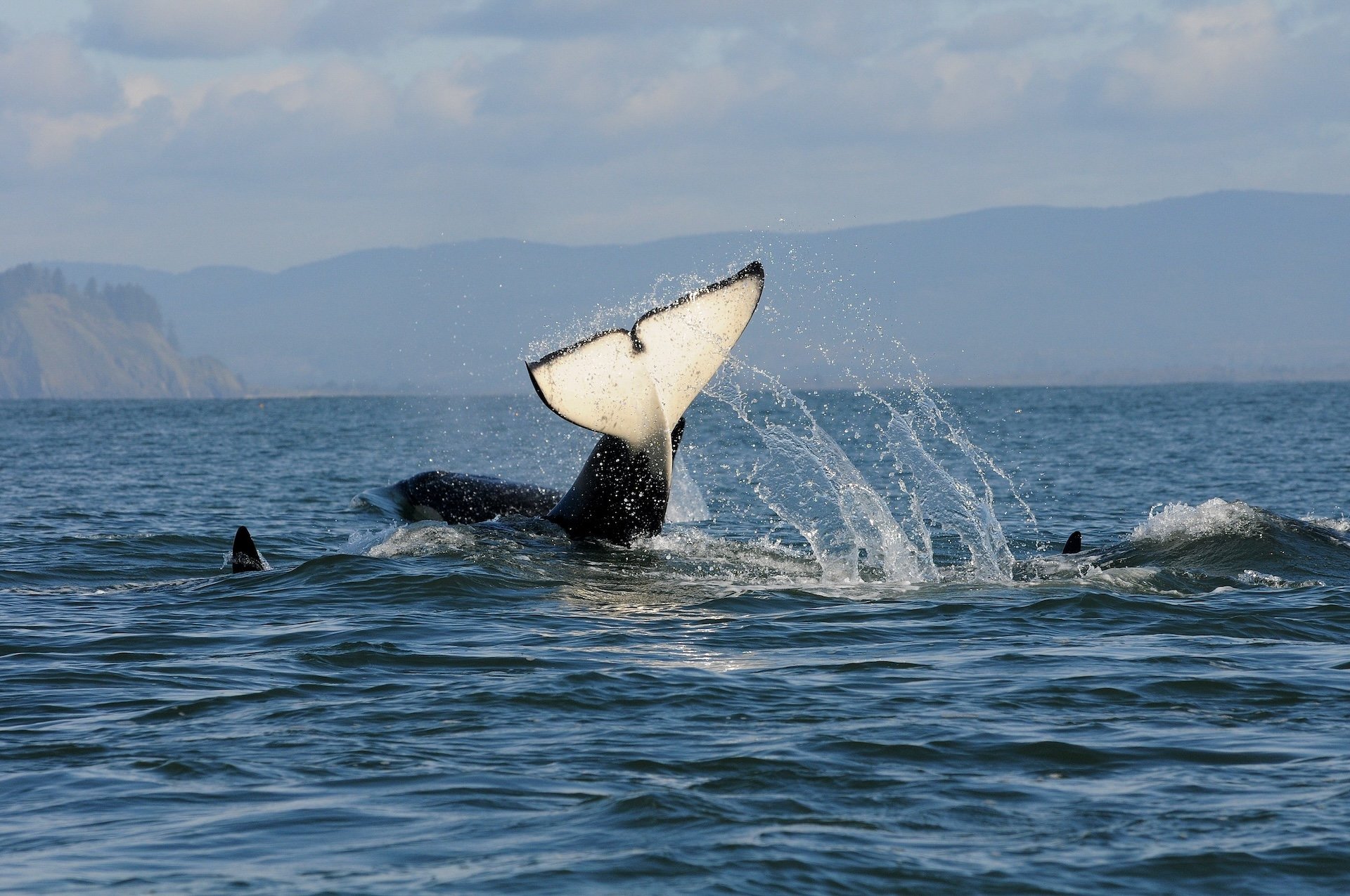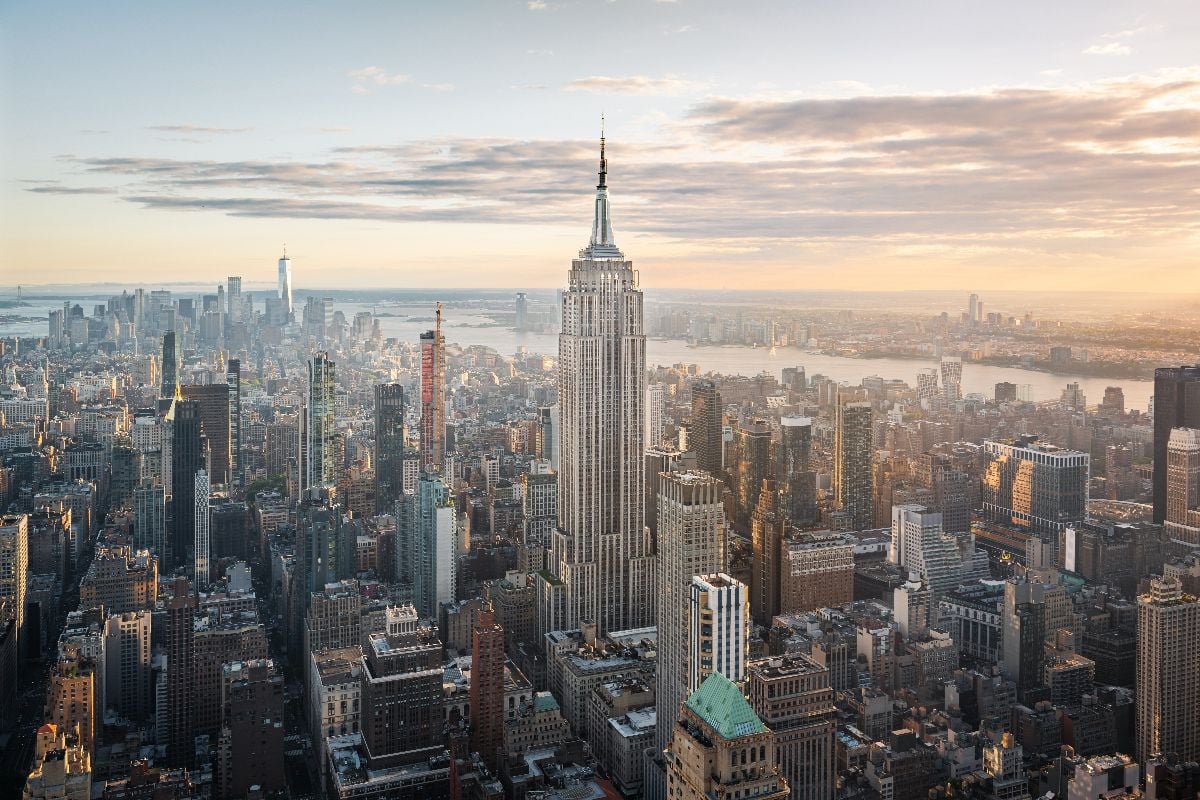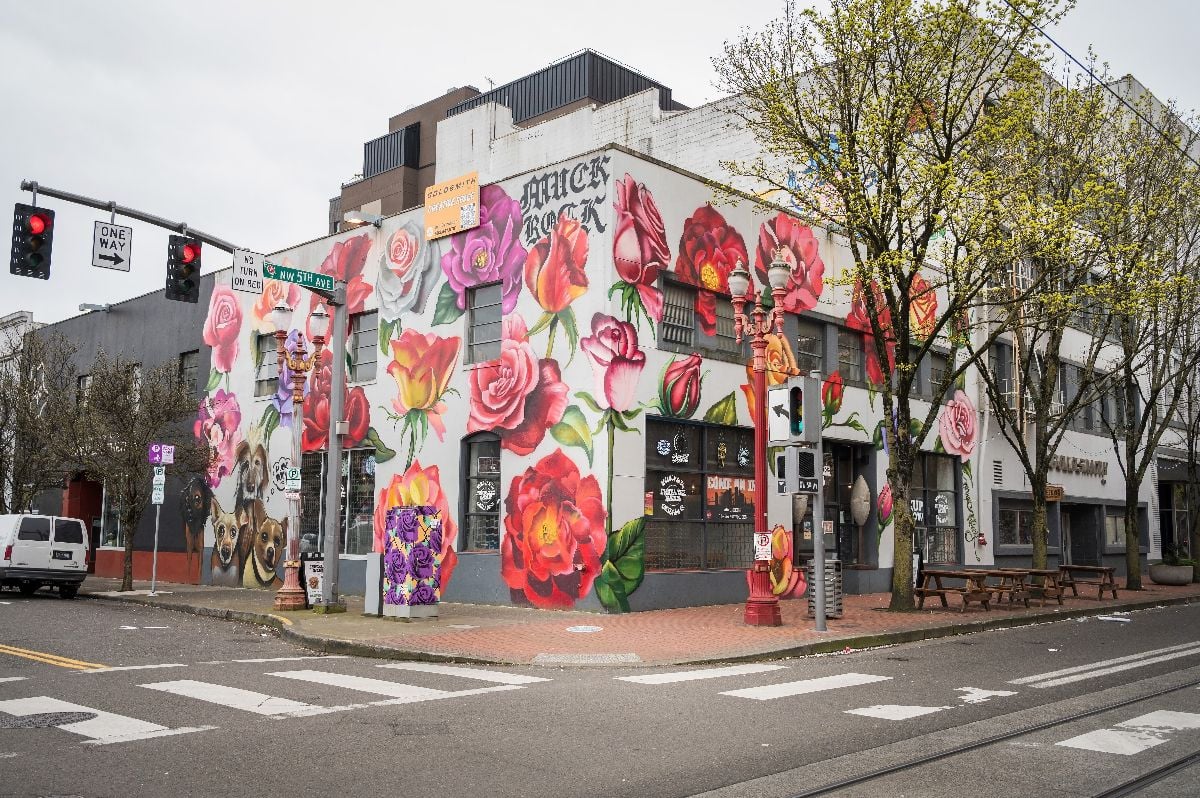
Northern Washington unfolds like a slow-breathing landscape, where the roads narrow, the trees rise higher, and the noise of elsewhere fades to a distant hum. Towering evergreens guard rivers that run cold and fast, mountains cast their blue shadows over valleys, and towns settle into the rhythm of tide, wind, and season.
In this corner of the state, the pace is measured differently. A harbor bell marks the hour. The curve of a two-lane road becomes a kind of punctuation. Cafés serve coffee with the same steady warmth they’ve offered for decades. Beaches require a tide chart to reach; trails lead to overlooks where the horizon is more water than land.
Some of these places sit on islands, others anchor themselves to remote river bends or mountain valleys. They are connected by roads and ferries, yet feel set apart, as if deliberately spared from hurry.
These 25 towns are less about being found than about being known—each with a geography, a history, and a temperament that rewards anyone willing to slow down long enough to notice.
25. Neah Bay: Edge-of-the-World Quiet
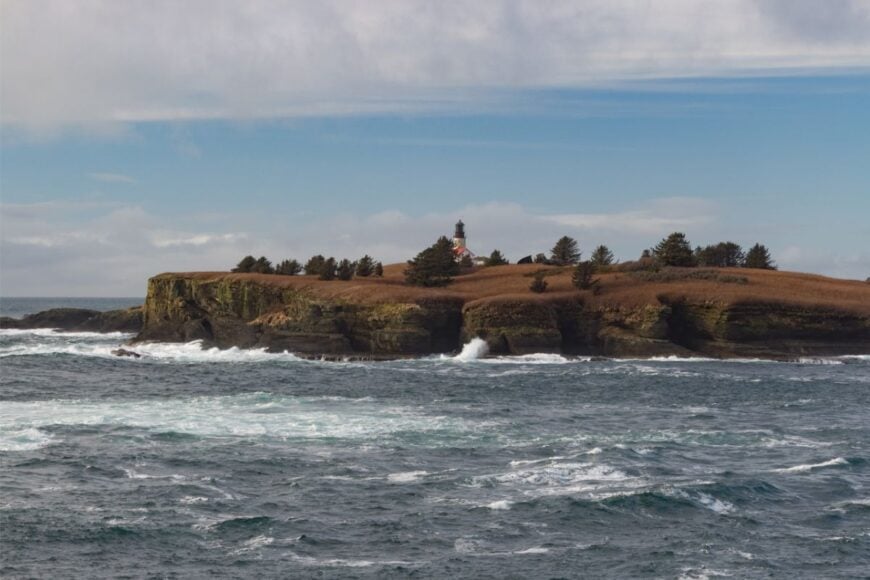
Neah Bay sits at the continent’s ragged edge, where the road runs out and the Pacific breathes in long, salt-cold swells. Its seclusion comes naturally—way out on the Makah Reservation at the tip of the Olympic Peninsula, miles beyond the last big grocery run.
The town feels unhurried and sea-forward: gulls, cedar smoke on rainy air, and boats tracing quiet arcs across the harbor. Walk to Cape Flattery’s cliffside overlooks, beachcomb Shi Shi Beach at very low tide, or linger through the exhibits at the Makah Cultural & Research Center.
Fishing and tribal enterprises anchor the local economy. Even on blustery days, there’s a hush between waves that makes time feel wider. It’s the kind of place that asks you to listen before you speak.
Where is Neah Bay?
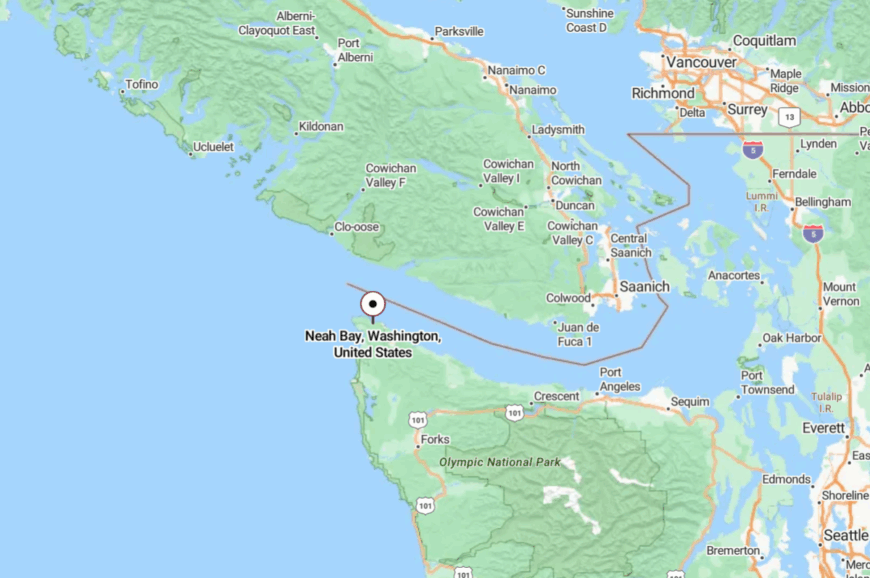
Tucked into the far northwest corner of Washington on the Makah Reservation, Neah Bay lies about 75 miles west of Port Angeles. You reach it via the serpentine Strait of Juan de Fuca Scenic Byway along SR 112.
The final miles feel remote, with forest pressing in and the ocean opening out at the end of the road. It’s close enough to reach in a day, yet distant enough to feel like the world has thinned to sea and sky.
24. Sekiu: Small Harbor, Big Sky
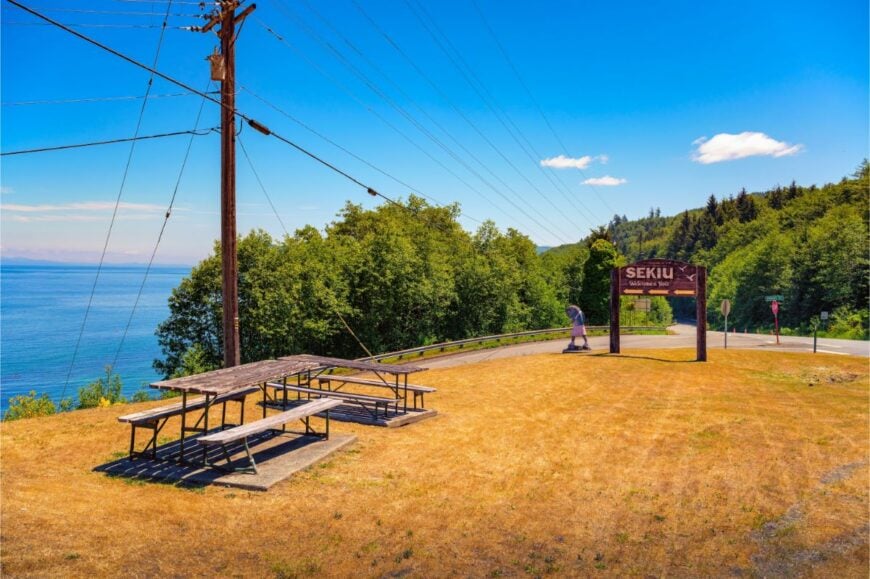
Folded along a crescent of the Strait of Juan de Fuca, Sekiu feels like a pocket harbor forgotten by time. Its isolation owes to the far-flung north coast and the two-lane rhythm of SR 112 that keeps life slow.
The vibe is salt-and-cedar rustic: skiffs on trailers, rainjackets drying on porch rails, and a fisherman’s chatter down by the docks. Cast for salmon, watch migrating whales from the bluffs, or wander the beach at first light.
Tourism, charter fishing, and a handful of small businesses keep the lights warm. Nights are dark and starry, with only the tide for a clock. It’s the sort of place that teaches you the difference between quiet and stillness.
Where is Sekiu?
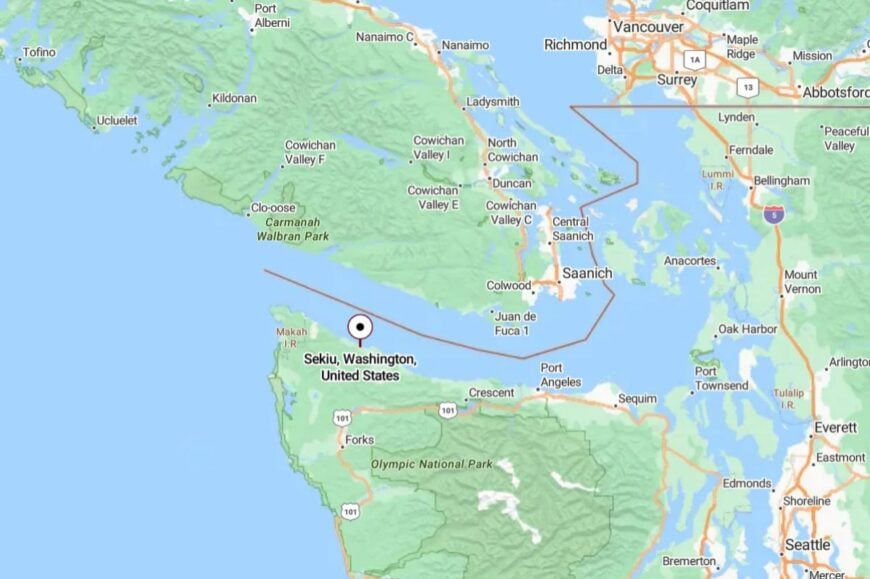
Sekiu sits on the north coast of the Olympic Peninsula, roughly 40 miles west of Port Angeles and just east of Clallam Bay. Most visitors arrive along SR 112, a scenic two-lane road that hugs the water.
The approach winds through spruce and shoreline vistas until the harbor appears like a secret. When fog drifts in off the strait, the town feels a world away.
23. Joyce: Roadside Time Capsule
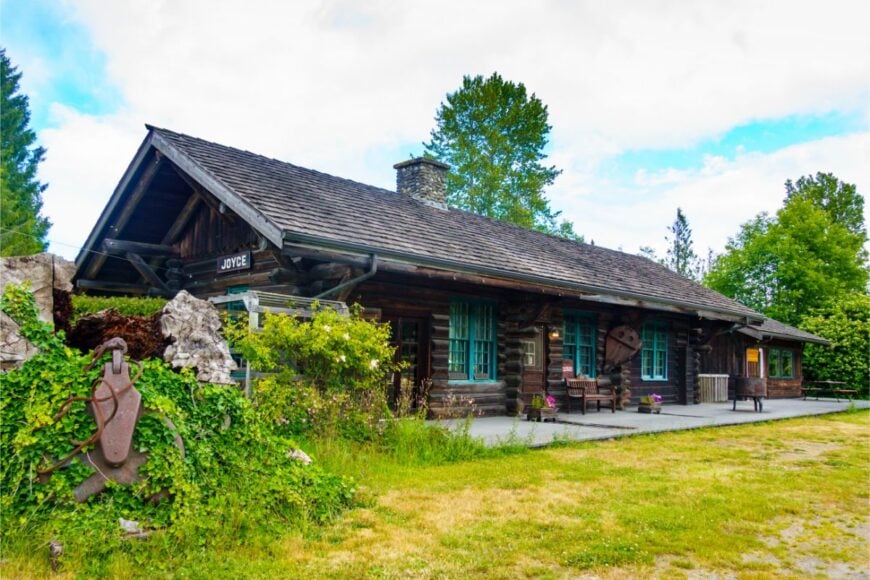
Joyce is the kind of roadside hamlet you almost miss—until the old general store and clapboard fronts pull your eyes from the trees. Its tucked-away feeling comes from being strung along a lonely stretch of SR 112, between stormy headlands and deep forest.
The vibe is friendly and historic: hand-written signs, a small museum, and coffee that tastes better when it’s raining. Stop for pie, browse the aisles of the century-old store, and detour to Lake Crescent’s glassy coves or Salt Creek tide pools. Most livelihoods are tied to services for travelers and nearby forestry.
Rain on the roof and driftwood-stacked beaches give the day a soft edge. It’s the sort of stop that lingers in memory longer than you expect.
Where is Joyce?
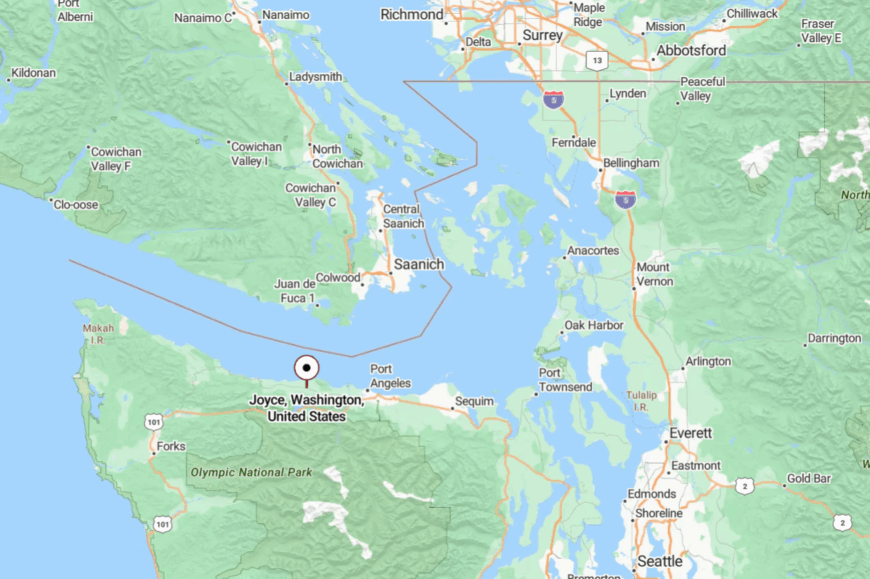
Joyce sits in Clallam County on SR 112, about 16 miles west of Port Angeles. The road threads through forest and strait, with few distractions and a lot of horizon.
Pull-offs lead to hidden beaches and the blue depths of Lake Crescent just inland. It’s a short distance on the map, but it feels like a step off the main stage.
22. La Push: Where Rivers Meet the Sea

At La Push, the river opens into the Pacific, and sea stacks shoulder the surf like sentinels. Its seclusion is partly geographical—at the end of a spur road on the Quileute Reservation—and partly emotional, a spaciousness you feel in your chest.
The village moves to the tide’s tempo: cedar canoes, driftwood fires, and dogs trotting the beach at dusk. Walk First, Second, and Third Beach, scan for gray whales offshore, and watch storms roll in from Rialto.
Tourism and tribal enterprises form the local backbone. Even busy summer afternoons feel intimate under the roar of the waves. It’s the kind of place that reminds you how the ocean edits your thoughts.
Where is La Push?

La Push lies west of Forks in coastal Clallam County, at the end of SR 110. The route follows river valleys to the sea, narrowing until the surf is suddenly there in front of you.
With the park and reservation boundary lines, it sits neatly apart from the world. Close enough for a day trip, far enough to feel like a crossing.
21. Point Roberts: The Little Exclave by the Sea
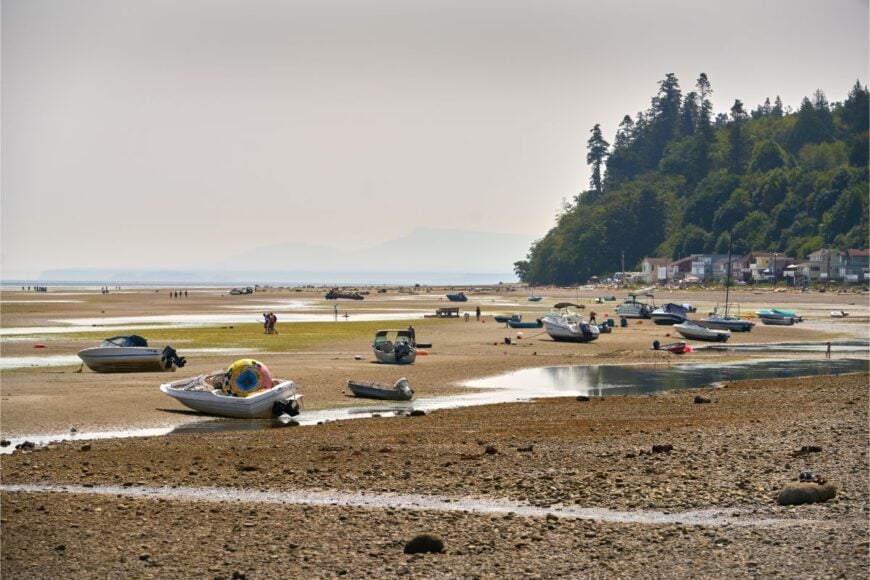
Point Roberts is secluded by a quirk of geography, a tiny U.S. community dangling below the 49th parallel and cut off from the rest of Washington by Canada. Life here is coastal, wind-tilted, and neighborly, with beaches that curve under big skies.
Walk Lighthouse Marine Park’s boardwalk, bike quiet lanes edged with rose hips, or watch orcas cruise Boundary Bay. Tourism and cross-border services ebb and flow with the season.
The oddity of needing a passport for errands elsewhere adds to the off-grid romance. It feels like a gentle secret kept at the edge of the map.
Where is Point Roberts?
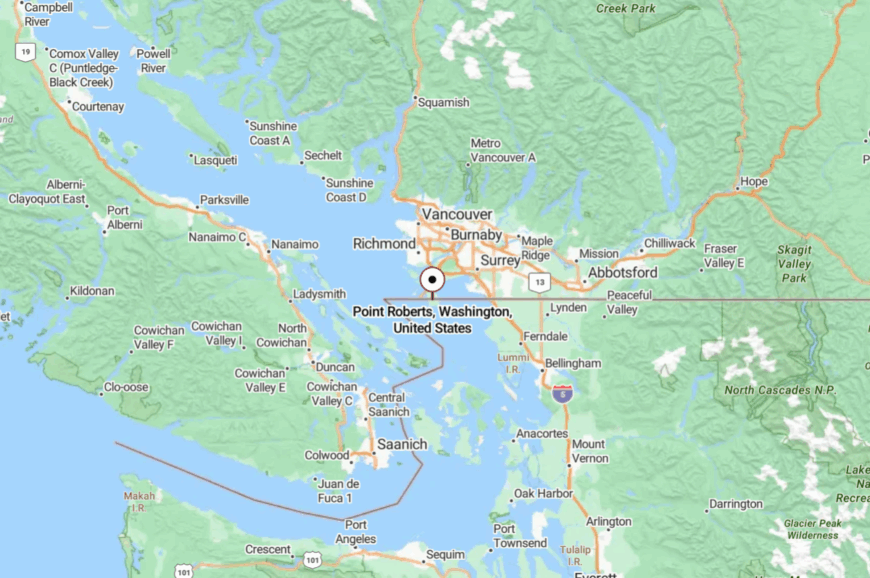
Set on the southern tip of the Tsawwassen Peninsula in Whatcom County, Point Roberts is reachable by driving through Canada or by boat or small plane. From Vancouver, it’s about 20 miles south; from Bellingham, plan for border crossings.
The approach itself heightens the sense of separation. Once you’re there, it’s water on three sides and quiet on all of them.
20. Lummi Island: Five-Minute Ferry, Whole-Other-World
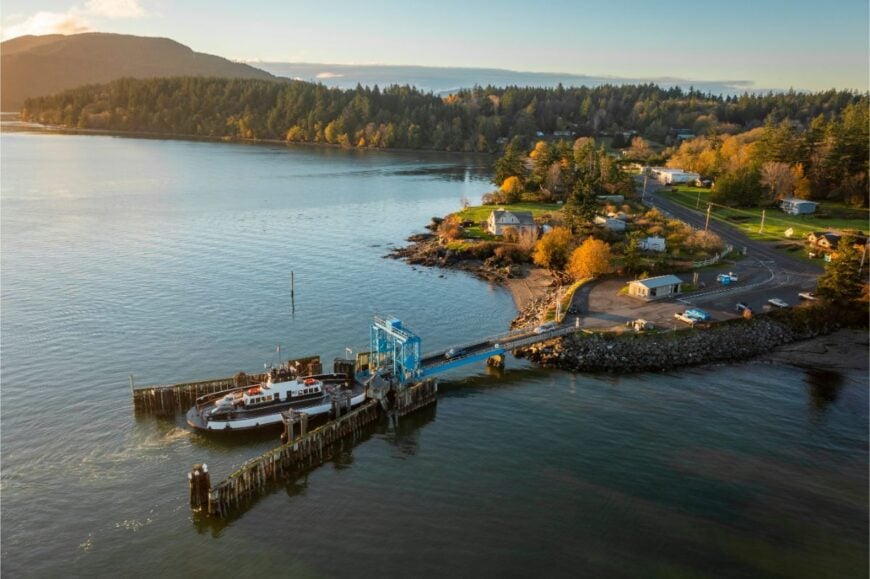
Lummi Island feels folded into its own time zone—farm stands, artists’ studios, and small coves where the tide whispers over pebbles. Seclusion comes by water: a short county ferry keeps the pace island-slow and visitor numbers modest.
The mood is creative and low-key, with neighbors waving from bicycles and herons stalking eelgrass. Beachcomb at Sunset Beach, hike Baker Preserve for sweeping views, or circle the island on a lazy bike ride.
Art, small-scale agriculture, and visitor services dot the economy. Even on bright days, the silence has texture. It’s a near-to-town escape that still feels far away.
Where is Lummi Island?
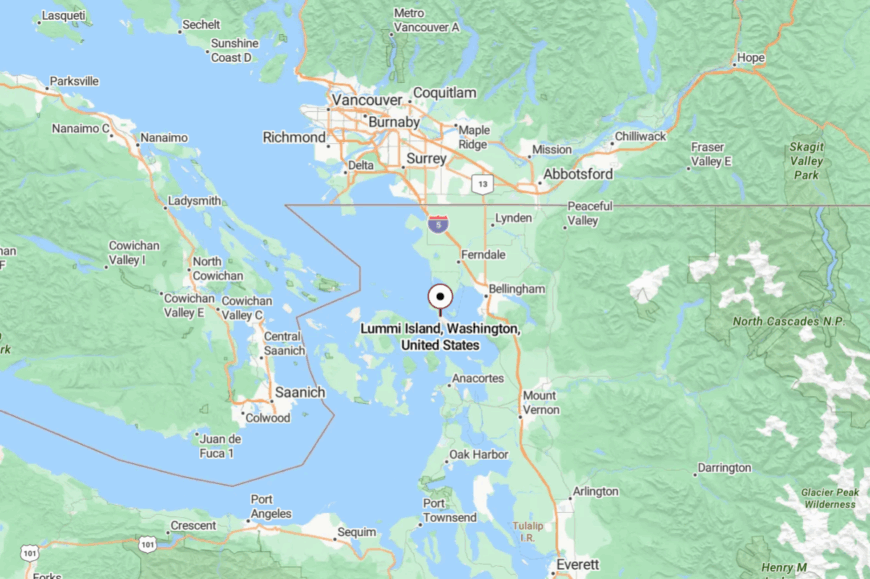
In north Puget Sound, just west of Bellingham, Lummi Island is reached by the Whatcom Chief ferry from Gooseberry Point. The crossing is only a few minutes, but it acts like a drawbridge to a quieter realm.
Roads narrow, views widen, and plans get simpler. It’s close enough for an afternoon, yet perfect for going off-grid by degrees.
19. Waldron Island: No-Frills, Deep Quiet

Waldron is the San Juans stripped to essentials—no ferry, few services, and a calm that sits lightly on the shoulders. Its isolation is literal: you arrive by private boat or small charter, and then time stretches.
The vibe is minimalist and wild: gravel roads, deer in the orchards, and the hush of wind through madrona leaves. Kayak the shoreline, beach-walk the county dock area, or simply read under a mossy cedar.
There’s no tourism machine here, just islanders living quietly. Even a short stay can feel like a retreat you’ll measure other trips against. It’s where stillness becomes its own attraction.
Where is Waldron Island?
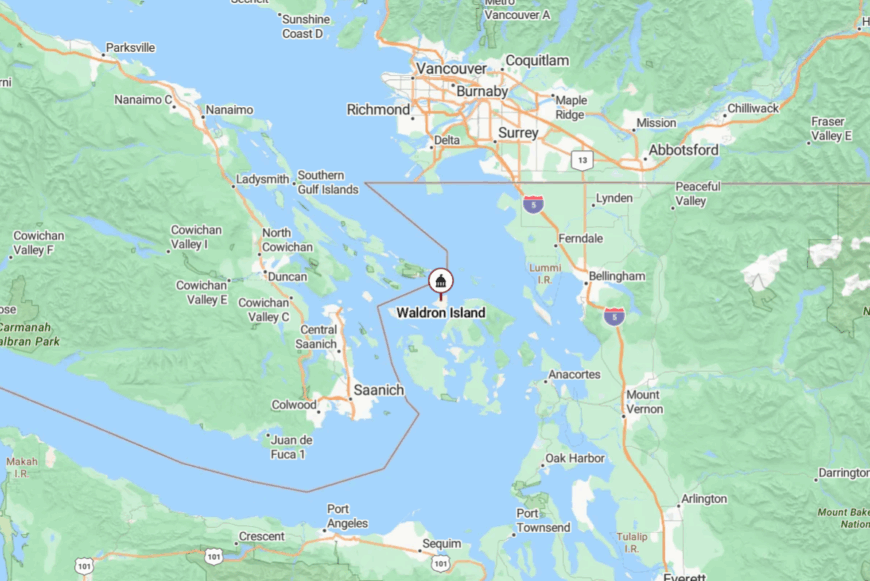
Northwest of Orcas Island in San Juan County, Waldron floats outside the main ferry grid. Access is by private craft to the county dock, keeping traffic—and bustle—low.
The run across Spieden Channel can be breezy, and the first step ashore feels like stepping back a few decades. It’s a speck on the map that holds a surprising amount of quiet.
18. Newhalem: Company Town in the Forest

Newhalem sits deep along the Skagit River, a tidy company town cupped by mountains and tall firs. Its seclusion is geographic and historic—the place was built for the Skagit hydro project and never grew beyond its canyon.
The vibe is orderly but woodsy: stone pathways, suspension bridges, and the hum of falls at night. Stroll the Ladder Creek Falls lights, tour historic City Light sites, or hike the nearby Trail of the Cedars.
Hydropower operations and park visitors are the heartbeat here. When evening drops into the valley, the stars feel closer than the next town. It’s a pocket of civilization holding hands with wilderness.
Where is Newhalem?

Newhalem is in the upper Skagit Valley along SR 20, east of Concrete and west of Diablo Lake. The North Cascades rise steeply on both sides, making the road the only easy way in or out.
Travelers usually pass through on the way to the high country, but staying a while reveals its quieter corners. It’s the last lamp-lit cluster before the highway goes truly wild.
17. Diablo: Turquoise Water, Tiny Footprint
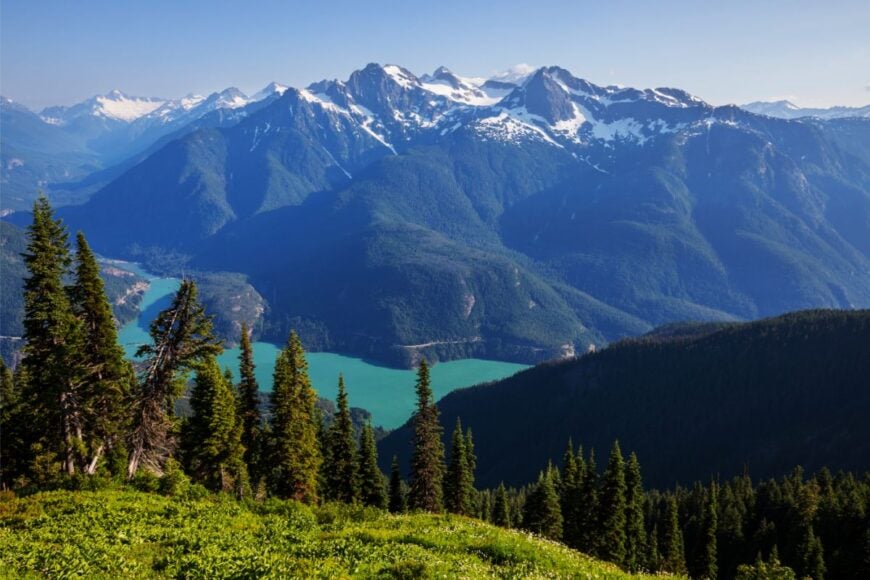
Diablo is more suggestion than town—some houses, historic hydro works, and that impossible blue lake framed by serrated peaks. Its seclusion is written in the map: a thin thread of SR 20, winter closures nearby, and wilderness on all sides.
The feeling is alpine and hushed; even voices seem to soften along the water. Paddle Diablo Lake, hike Thunder Knob for high views, or picnic at Colonial Creek under old-growth shade.
Hydropower and park-season traffic are the only steady pulses. Clouds snag on ridgelines and drift like slow ships. It’s a place that makes you talk about color the way you do weather.
Where is Diablo?

Diablo sits along SR 20 in the heart of the North Cascades, just east of Newhalem and west of Rainy Pass. The highway tracks the lake’s edge before bending toward higher country.
Reaching it is a simple drive that feels like an unveiling—forest, water, then mountains stacked to the sky. When the pass closes in winter, the remoteness doubles.
16. Concrete: River Town Under Big Cliffs

Concrete clings to a bend of the Skagit beneath sheer rock faces, its name a nod to the old cement works that built the valley. Seclusion creeps in as SR 20 narrows and the hills lean close, cutting off the wider world.
The vibe is small-town and outdoorsy: murals, a historic silos skyline, and neighbors swapping trail conditions over coffee. Swim at nearby lakes, bike the Cascade Trail, explore Sauk Mountain, or watch eagles in winter.
Services and tourism supplement the legacy of industry here. Dusk turns the cliffs pink, and the river becomes a long mirror. It’s a gateway town that still feels like a hideaway.
Where is Concrete?
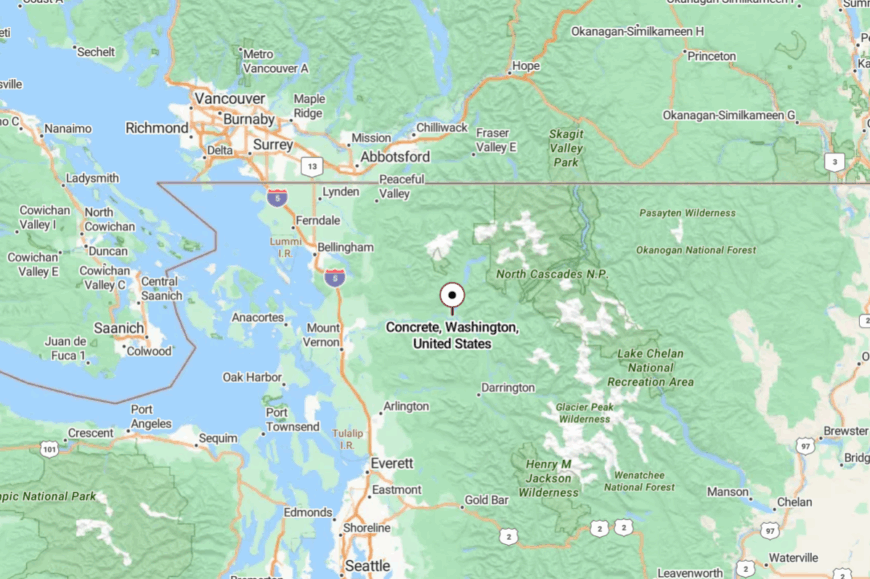
In eastern Skagit County along SR 20, Concrete lies about 35 minutes east of Burlington. The approach follows the Skagit through farms into the forest, with the highway slowly shedding traffic.
From here, the mountains are no longer far—they’re the neighborhood. It’s the last easy resupply before the road forgets what “busy” means.
15. Darrington: Valley Wrapped in Peaks
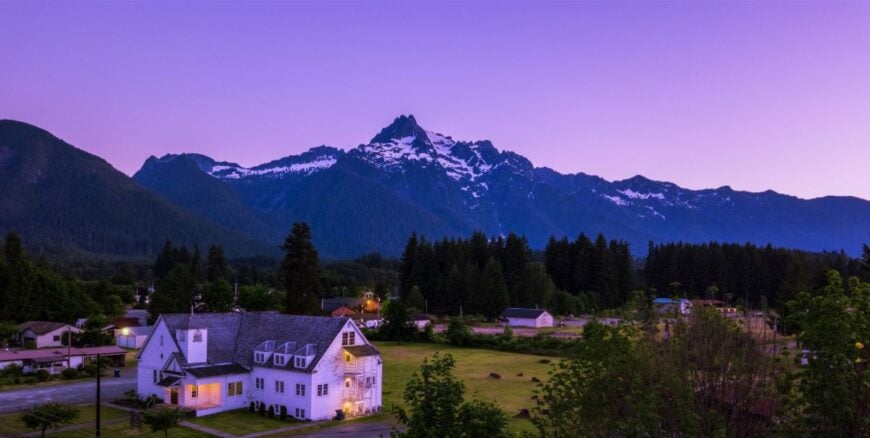
Darrington sits where rivers braid and mountains pinch the horizon into a perfect V. Its tucked-away feel comes from lying off the interstate grid, at the end of a two-lane road that follows water and forest.
The town vibe is logging-true and trail-ready: chainsaws in truck beds, climbers swapping beta outside the café. Hike to Suiattle River vistas, fish the Sauk, climb at Three O’Clock Rock, or wander Whitehorse views at sunset.
Forestry and outdoor recreation keep locals busy. You notice the quiet first, then how the quiet is full of river sound. It’s a place that makes ambition shrink to the size of a good day outside.
Where is Darrington?
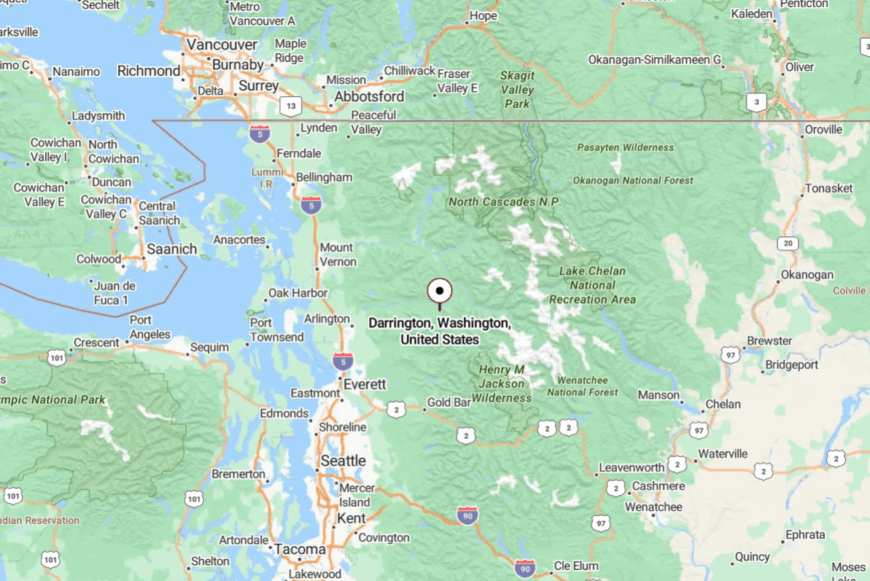
In a North Cascades valley of Snohomish County, Darrington sits about 30 miles east of Arlington. State Route 530 traces the Stillaguamish and Sauk Rivers to town, then continues north toward Rockport.
The drive is all mountains and water, and it feels like a natural filter for noise. By the time you arrive, you’ve already slowed down.
14. Conconully: Two Lakes, One Slow Afternoon
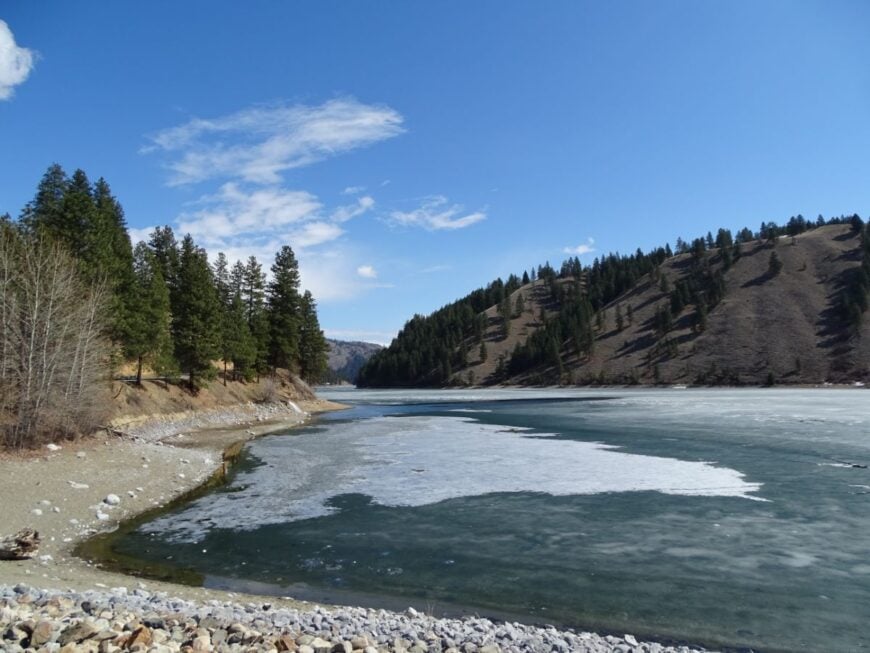
Conconully curls between forested ridges with a pair of blue lakes like coins in a pocket. Its distance from major highways does most of the hiding; the rest is done by pines and quiet.
The town mood is cabin-simple and family-friendly, with docks, deer in backyards, and a main street that yawns in the sun. Fish the reservoirs, paddle at daybreak, wander the state park, or snowmobile come winter. Tourism and small-town services provide the hum.
Time here feels measured in casts and campfire sparks. It’s the kind of place where a good day is pleasantly hard to recount because nothing urgent happened.
Where is Conconully?

Nestled in Okanogan County northwest of Omak, Conconully is reached on county roads that climb into the hills. The approach rolls past ranchland before dropping to the lakes.
With state park facilities and few through-roads, it stays quietly self-contained. You arrive, and the world decides not to follow.
13. Chesaw: Hills, Sage, and a Whisper of Gold

Chesaw is a scatter of buildings in big, open country—more horizon than town, more sky than street. Its isolation comes from being tucked in the Okanogan Highlands near the Canadian line, well off any main highway.
The feel is Old West and neighborly: weathered façades, a one-room pace, and talk of hay, calves, and snowfall. Visit during the small-town rodeo, poke around historic markers, or take slow drives on dirt roads that crest into vast views.
Ranching and a dusting of tourism sustain things here. The quiet has weight, like a blanket across the hills. It’s a place that reminds you how much room a life can take.
Where is Chesaw?

In the northeast corner of Okanogan County, Chesaw is reached via Chesaw Road from Oroville through rolling ranchland. The drive is all tan hills and fence lines, with mountains hazy on the rim.
Distances are deceptive; the space between towns is measured in fields. When you pull in, the stillness greets you first.
12. Northport: River Bend at the Border
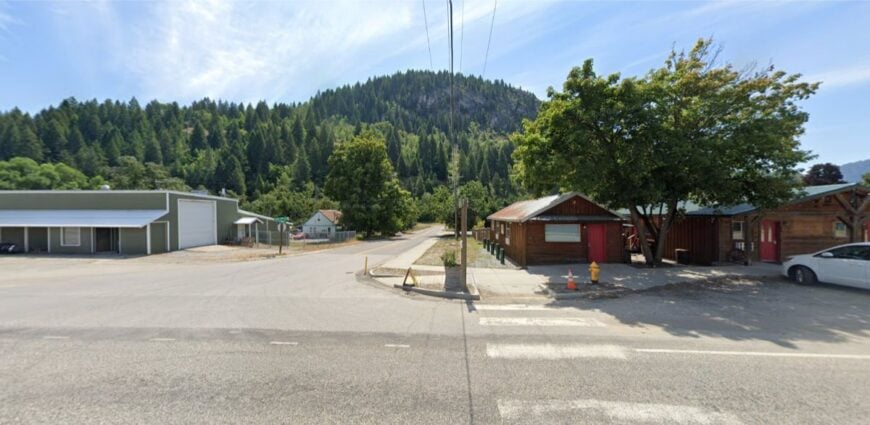
Northport curves along the Columbia, where the river feels young and the traffic feels far away. Its seclusion is carved by distance—way up in Ferry County with Canada just beyond the hills.
The town vibe is riverside-honest: anglers at dawn, bikes leaning against café windows, and a ferry-era main street that never quite forgot its past. Fish or paddle the Columbia, ride quiet county roads, explore nearby forest trails, or detour to local hot springs over the line.
Timber, small agriculture, and cross-border commerce are steady threads. The river smooths the day’s edges until only light remains. It’s the sort of bend in the map that holds you longer than planned.
Where is Northport?

In far northeastern Washington, Northport sits about 10 miles south of the Canadian border on the Columbia River. Highways 25 and local roads link it to the border crossings at Waneta and Patterson.
The drive follows water and low hills, with few towns and big intervals between them. It feels like you’re arriving at the end of a sentence.
11. Metaline Falls: Limestone Cliffs and Lantern Evenings
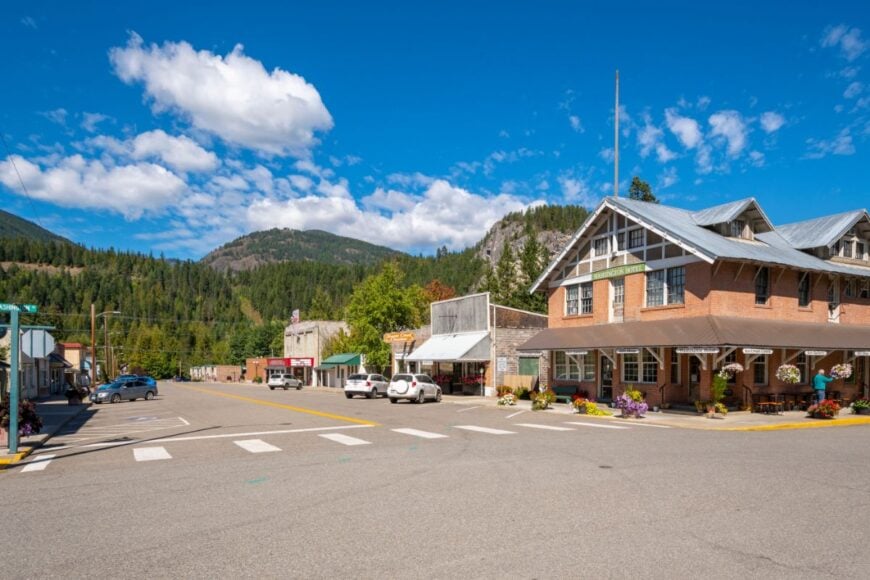
Metaline Falls perches under pale cliffs with the Pend Oreille sliding by, a river town with theater posters on brick and freight history in its bones. Seclusion here is partly distance and partly canyon—the far northeastern corner, a two-lane up the valley, and forest thick as curtains.
The mood is artsy frontier: the Cutter Theatre’s marquee, miners’ stories set in stone, and hikers ducking in for coffee. Walk the Mill Pond Historic Site, drive the Boundary Dam overlook, paddle calm eddies, or catch a show if you time it right.
Tourism hums alongside legacies of mining and hydropower. Evening comes early behind the ridges and feels like lamplight. It’s a place where the past sits at the table without crowding you.
Where is Metaline Falls?
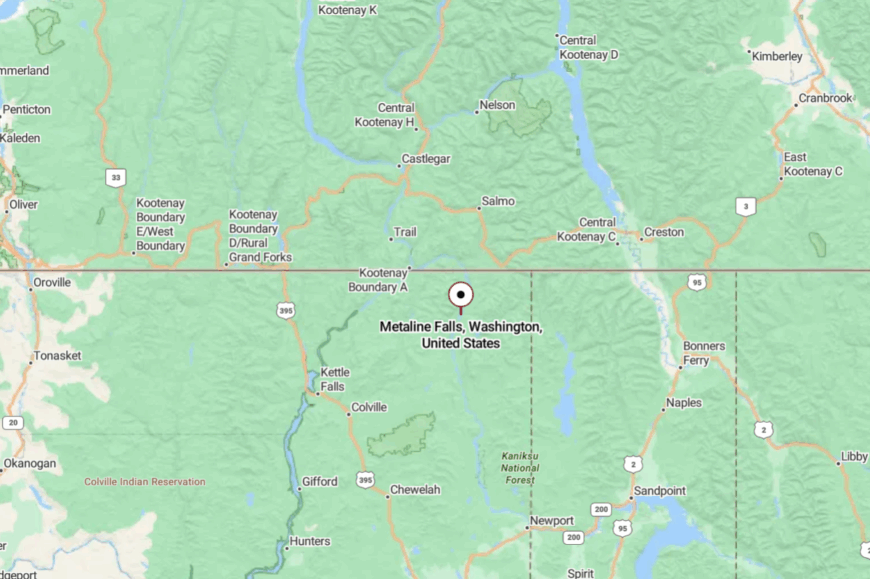
Way up in Pend Oreille County near the Canadian line, Metaline Falls is reached via SR 31 north from Ione. The road traces the river through tight bends and timber until the canyon opens to town.
Cliffs rise close enough to feel like company, and the nearest city is hours away. That distance is exactly the point.
10. Kendall: Peaceful Foothill Retreat

Kendall, with a population of just over 200, is a quaint community nestled in the foothills of the Cascade Mountains near the Canadian border. I love exploring the nearby trails like the Horseshoe Bend Trail, which offers stunning river views and lush forest scenery.
The area is primarily residential, with local businesses catering to outdoor enthusiasts and the daily needs of residents. What makes Kendall truly secluded is its serene environment, surrounded by dense forests and rolling hills that provide a tranquil escape.
The lack of urban development preserves its peaceful atmosphere, making it a hidden retreat for those seeking quiet living. It’s the perfect spot for anyone looking to immerse themselves in nature’s embrace without straying too far from modern conveniences.
Where is Kendall?

Kendall is located in Whatcom County, in the northwestern corner of Washington State, just a short drive from the Canadian border. Its seclusion is enhanced by its position off the main highways, tucked away along the Mount Baker Highway (State Route 542).
To get there, I usually take the scenic route east from Bellingham, winding through the countryside for about 30 miles. The journey itself is a peaceful drive through forests and small towns, further emphasizing the tranquil isolation that defines Kendall.
9. Wauconda: Off the Beaten Path

Wauconda is a tiny community with a population of fewer than 50 people, making it one of the most secluded spots I’ve ever visited in Northern Washington. The area offers vast landscapes perfect for hiking, horseback riding, and exploring the Okanogan-Wenatchee National Forest nearby.
There’s a historic Wauconda ghost town site that I find intriguing, a reminder of the area’s rich mining history. The main industries here revolve around ranching and small-scale agriculture, contributing to its rural charm.
What makes Wauconda truly secluded is its remote location and sparse population, allowing for uninterrupted tranquility and a sky full of stars at night. It’s an ideal place for those looking to escape the hustle and bustle and immerse themselves in nature.
Where is Wauconda?

Situated in Okanogan County, Wauconda lies along State Route 20 in northeastern Washington, not far from the Canadian border. Its seclusion is due in part to its remote location amidst rolling hills and untouched wilderness, far from major cities or highways.
To get there, I take the scenic North Cascades Highway eastward, enjoying the breathtaking views along the way, then continue onto State Route 20 until I reach this peaceful enclave. The journey itself underscores the remoteness of Wauconda, making it a perfect getaway for solitude seekers.
8. Olga: Quiet Living on Orcas Island

Olga is a serene hamlet on Orcas Island with a close-knit community of around 600 residents. I adore the waterfront views here, with activities like kayaking, whale watching, and visiting the local Moran State Park with its hiking trails and the famous Mount Constitution viewpoint.
The area thrives on tourism, local arts, and small businesses that add to its island charm. Olga’s seclusion comes from its island location, accessible only by ferry or private boat, which helps maintain its slow-paced lifestyle.
The expansive properties and minimal development make it a haven for those seeking a peaceful retreat surrounded by natural beauty.
Where is Olga?

Olga is located on the eastern side of Orcas Island, the largest of the San Juan Islands in the Salish Sea. Its seclusion is enhanced by the ferry ride needed to reach the island, creating a physical barrier from the mainland’s hustle and bustle.
To get there, I usually take the Washington State Ferry from Anacortes to Orcas Island, then enjoy a leisurely drive across the island to reach Olga. The journey itself is part of the charm, with stunning water views and a sense of stepping back in time as you arrive in this tranquil community.
7. Glacier: At the Foot of Mount Baker

Glacier is a small community with a population of about 200, serving as the last full-service community before the Mount Baker Ski Area. I enjoy stopping here for a warm meal or to gear up before heading into the mountains for skiing, snowboarding, or hiking in the Mt. Baker-Snoqualmie National Forest.
Local businesses cater to outdoor enthusiasts, with a few eateries and shops adding to its quaint charm. Glacier’s seclusion stems from its location deep within the mountains, surrounded by towering forests and limited residential development.
This peaceful enclave offers unparalleled access to nature and a quiet atmosphere that’s hard to find elsewhere.
Where is Glacier?

Located in Whatcom County along State Route 542, Glacier sits about 35 miles east of Bellingham. Its secluded nature is due to its position at the edge of the wilderness before the road ascends into the Mount Baker area.
To reach Glacier, I drive east from Bellingham along the Mount Baker Highway, enjoying the increasingly rugged terrain and dense forests. The journey underscores Glacier’s remote setting, making it a perfect base camp for mountain adventures or a quiet mountain retreat.
6. Loomis: Serenity in the Okanogan Highlands

Loomis is a quiet community with a population of around 150 people, located amidst the rolling hills of the Okanogan Highlands. The area is perfect for fishing, hunting, and exploring nearby lakes like Palmer and Spectacle Lake.
I love the serenity of this place, with its pristine landscapes and opportunities for wildlife viewing in the Sinlahekin Wildlife Area. The main industries here include agriculture, with some cattle ranching and fruit orchards dotting the landscape.
Loomis’s seclusion is due to its remote location and the expansive open spaces that surround it, providing a peaceful escape from the outside world.
Where is Loomis?

Loomis is situated in northern Okanogan County, close to the Canadian border and west of Tonasket. Its secluded nature is accentuated by its distance from major highways and towns. To get there, I usually take U.S. Route 97 to Tonasket and then head west on Loomis-Oroville Road, driving through picturesque countryside.
The journey highlights the remoteness of Loomis, making it an ideal spot for those seeking solitude and a deep connection with nature.
5. Curlew: A Hidden Gem Near the Canadian Border

Curlew, with a population of around 120, is a small town that offers a peaceful rural lifestyle away from urban centers. I find it charming for its historic Curlew Bridge and the nearby Ferry County Rail Trail, perfect for hiking and biking.
The area is rich in history, with the Ansorge Hotel Museum providing a glimpse into the past. The main industries are ranching and small-scale agriculture, contributing to its rustic appeal.
Curlew’s seclusion arises from its location in the northeastern corner of Washington, surrounded by mountains and forests that offer ample privacy and tranquility.
Where is Curlew?

Curlew is located in Ferry County, along the Kettle River and near the Canadian border. Its secluded nature is enhanced by its remote position, far from major highways and cities. To reach Curlew, I usually drive north from Republic on State Route 21, winding through scenic landscapes.
The town’s isolation emphasizes its quiet charm, making it a perfect destination for those looking to unplug and enjoy the simplicity of rural life.
4. Rockport: Where Nature Reigns

Rockport has a small population of around 100 residents and is nestled along the Skagit River. I enjoy visiting Rockport State Park, where ancient forests provide a lush backdrop for hiking and birdwatching. The area is known for its bald eagle sightings, especially during the winter months.
The main industries revolve around forestry and tourism, with a focus on outdoor recreation. Rockport’s seclusion comes from its location amidst vast forests and its minimal development, offering a profound connection to nature that I find refreshing.
Where is Rockport?

Rockport is situated in Skagit County, along State Route 20, also known as the North Cascades Highway. Its seclusion is due to its position between the towering Cascade Mountains and the meandering Skagit River.
To get there, I drive east from Burlington along SR 20, immersing myself in the increasingly rugged and forested terrain. The town’s remote setting and natural surroundings make it an ideal spot for nature lovers seeking a peaceful retreat.
3. Marblemount: The Last Stop Before the Wilderness

Marblemount is a tranquil village with a population of about 200, serving as the gateway to North Cascades National Park. I love stopping by for a hearty meal before venturing into the wilderness for hiking, climbing, or rafting adventures.
The local economy centers around tourism and outdoor recreation services, catering to adventurers exploring the Cascade Mountains.
What makes Marblemount secluded is its location at the edge of vast wilderness areas, surrounded by majestic mountains and dense forests, providing a serene retreat away from urban life.
Where is Marblemount?

Located in Skagit County along State Route 20, Marblemount sits about 50 miles east of Interstate 5. Its seclusion is heightened by its position as the last major stop before entering the remote North Cascades National Park.
To reach Marblemount, I drive east on SR 20, enjoying the winding roads and stunning landscapes that signal departure from populated areas. The town’s isolation and proximity to untouched wilderness make it a haven for outdoor enthusiasts and those seeking solitude in nature.
2. Stehekin: Accessible Only by Boat or Plane

Stehekin is a truly secluded enclave with a small population of around 75 residents, located at the headwaters of Lake Chelan. I find it enchanting for its untouched natural beauty, with activities like hiking in the North Cascades, exploring waterfalls, and horseback riding.
There are no roads connecting Stehekin to the rest of the state, and local industries revolve around tourism and providing services to visitors seeking tranquility. The remoteness of Stehekin, surrounded by wilderness and only accessible by boat or seaplane, offers unparalleled privacy and a chance to disconnect completely.
Where is Stehekin?

Stehekin is situated in Chelan County, at the northern tip of Lake Chelan within the North Cascades National Park Complex. Its seclusion is due to its inaccessibility by road; to get there, I take a passenger ferry from Chelan or hop on a seaplane for a scenic flight.
The journey itself is part of the adventure, highlighting the remoteness that defines Stehekin. Surrounded by towering peaks and deep forests, it’s a sanctuary for those seeking an immersive wilderness experience.
1. Mazama: Gateway to the North Cascades

Mazama is a small community with a population of around 200, nestled at the edge of the North Cascades. I appreciate its remote mountain living, with endless opportunities for outdoor activities like hiking, mountain biking on the Methow Trails, and cross-country skiing during winter.
The local economy focuses on tourism and outdoor recreation, with a few lodges, shops, and cafes serving visitors and residents alike.
Mazama’s seclusion comes from its expansive landscapes, low population density, and its location far from major urban centers, offering a peaceful environment for those who relish solitude and nature.
Where is Mazama?

Mazama is located in the Methow Valley of Okanogan County, along State Route 20 before it crosses the North Cascades. Its secluded nature is accentuated by its distance from major highways and cities, surrounded by vast wilderness areas.
To reach Mazama, I drive east from Sedro-Woolley on SR 20, traversing the stunning North Cascades Highway with its dramatic mountain views. The remote journey underscores Mazama’s isolation, making it a perfect gateway for adventures in the North Cascades or simply a serene mountain retreat.

